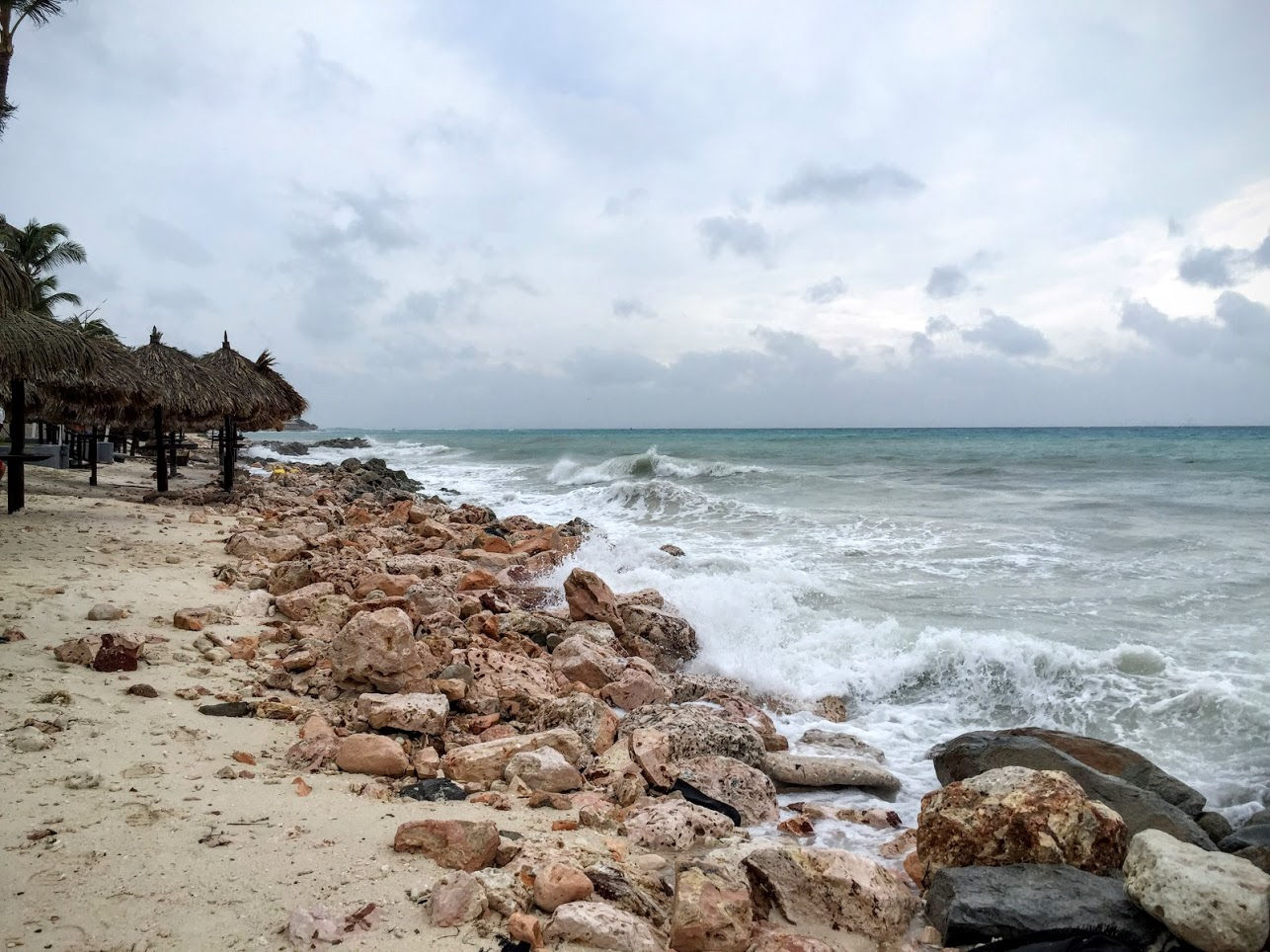Aruba Hurricane History

Aruba hurricane – Aruba, a Caribbean island located outside the hurricane belt, has historically been spared from the brunt of major hurricanes. However, the island has experienced several significant hurricanes over the years, causing varying degrees of damage and disruption.
The frequency of hurricanes impacting Aruba is relatively low compared to other Caribbean islands. On average, the island experiences a tropical storm or hurricane every 10 to 15 years. However, the severity of these storms can vary significantly, with some causing only minor damage while others have had devastating consequences.
Notable Hurricanes
Some of the most notable hurricanes to impact Aruba include:
- Hurricane Lenny (1999): A Category 4 hurricane that passed south of Aruba, causing significant damage to the island’s infrastructure and tourism industry.
- Hurricane Ivan (2004): A Category 5 hurricane that passed north of Aruba, bringing strong winds and heavy rain to the island.
- Hurricane Felix (2007): A Category 2 hurricane that made landfall on Aruba, causing widespread flooding and power outages.
These hurricanes have caused extensive damage to Aruba’s infrastructure, including roads, buildings, and utilities. They have also resulted in significant economic losses, particularly in the tourism sector, which is a major contributor to Aruba’s economy.
The relentless winds of the Aruba hurricane battered the island’s shores, leaving behind a trail of devastation. In the aftermath, thoughts turned to Puerto Rico , an island that had endured its own hurricane horrors in recent years. As the people of Aruba began the long road to recovery, they drew strength from the resilience of their fellow islanders in Puerto Rico, who had emerged from adversity with renewed hope.
Recovery Efforts
After each hurricane, the government of Aruba and international aid organizations have worked to provide assistance to those affected and to rebuild the island’s infrastructure. Recovery efforts have included:
- Providing emergency shelter and food to displaced residents
- Repairing and rebuilding damaged infrastructure
- Providing financial assistance to businesses and individuals
- Implementing disaster preparedness measures to mitigate the impact of future hurricanes
Through these efforts, Aruba has been able to recover from the impacts of hurricanes and continue to develop its economy and tourism industry.
Aruba braced for the impact of Hurricane Fiona, a powerful storm that had already battered other Caribbean islands. The National Hurricane Center issued a hurricane warning for Aruba, urging residents to take precautions. As the storm approached, officials advised people to secure their homes, stock up on food and water, and be prepared to evacuate if necessary.
Hurricane Preparedness and Mitigation

Aruba has developed comprehensive hurricane preparedness plans and protocols to safeguard its population and infrastructure. These plans involve a collaborative effort among government agencies, emergency responders, and the community.
Government Agencies and Emergency Responders
The Aruba Meteorological Service is responsible for monitoring weather conditions and issuing timely hurricane warnings and forecasts. The National Disaster Management Office coordinates disaster response efforts, including evacuation and shelter management. Emergency responders, such as the police, fire department, and Red Cross, are trained and equipped to assist during hurricanes.
Community Involvement
Community preparedness is crucial for effective hurricane response. Residents are encouraged to develop family emergency plans, assemble emergency kits, and stay informed about hurricane forecasts. Neighborhood watch groups play a vital role in monitoring and reporting potential hazards.
Mitigation Measures, Aruba hurricane
Aruba has implemented several measures to mitigate hurricane damage. Building codes require structures to withstand high winds and storm surges. Infrastructure improvements, such as seawalls and drainage systems, help reduce flooding and erosion. Coastal vegetation, including mangroves and dunes, serves as natural barriers against storm surges.
Hurricane Impact on Aruba’s Tourism Industry: Aruba Hurricane
Hurricanes pose a significant threat to Aruba’s tourism industry, which is the island’s economic lifeblood. The powerful storms can cause widespread damage to infrastructure, disrupt transportation, and deter visitors, leading to substantial economic losses.
The economic impact of hurricanes on Aruba’s tourism industry can be devastating. In 2017, Hurricane Irma caused an estimated $100 million in damages to the island’s tourism infrastructure, including hotels, restaurants, and attractions. The storm also disrupted air and sea transportation, stranding tourists and causing cancellations.
Strategies for Mitigating Negative Effects
To mitigate the negative effects of hurricanes on tourism, Aruba has implemented several strategies, including:
- Building resilient infrastructure: The government and private sector have invested in strengthening buildings and infrastructure to withstand hurricane-force winds and storm surges.
- Improving disaster preparedness: Aruba has developed comprehensive disaster preparedness plans that Artikel procedures for evacuating tourists, providing emergency shelter, and restoring essential services.
- Promoting disaster awareness: The government and tourism industry work together to educate tourists about hurricane risks and safety measures.
- Providing financial assistance: The government offers financial assistance to businesses and individuals affected by hurricanes, including low-interest loans and tax breaks.